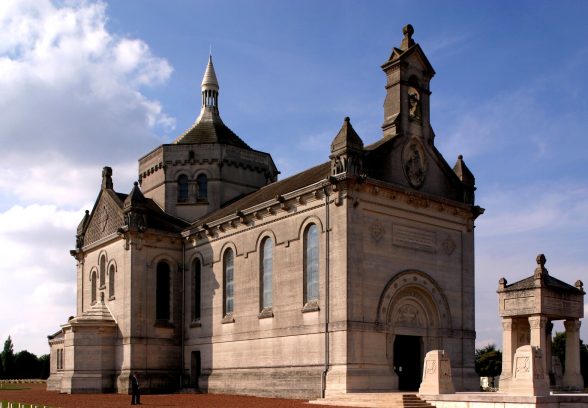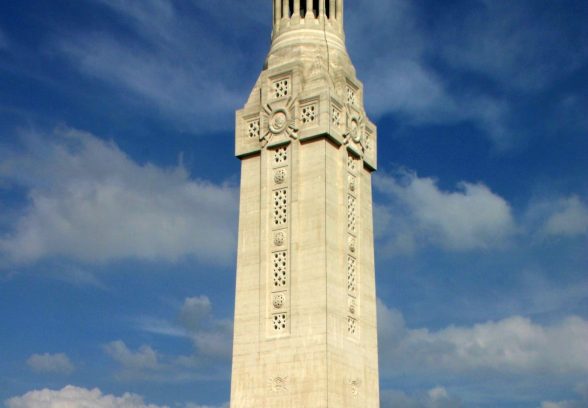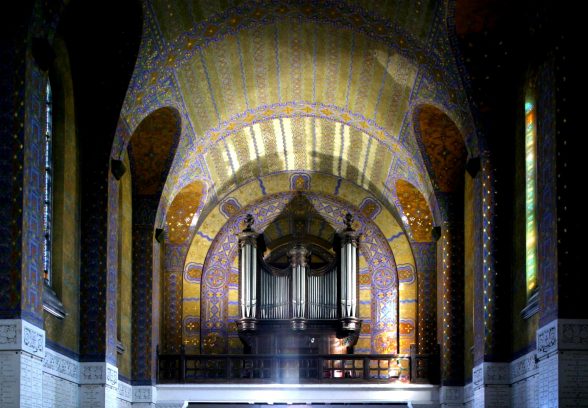This website uses cookies
This website uses cookies to enable it to function properly and to analyse how the website is used. Please click 'Close' to accept and continue using the website.





France: Nécropole nationale de Notre-Dame de Lorette
Architect: Louis-Marie Cordonnier & Jacques Cordonnier
Owners: Le Ministère des Pensions
Location: Ablain-Saint-Nazaire, France
The largest of the French national memorials and cemeteries, constructed 1921-27 and designed by Louis-Marie Cordonnier and his son Jacques Cordonnier, the architects of the basilica at Lisieux. There are 40,057 bodies in this desperate place, half of them in marked graves and half unidentified and placed in an ossuary beneath the tall lantern tower (1921-25) or in the crypt of the basilica or chapel. This, designed in a feeble Byzanto-Romanesque style and consecrated in 1927, is decorated with mosaics by Pierre Gaudin, André-Louis Pierre and others, and there is sculpture by Robert Coin. Six windows (some by Henry Payne) were given by the British in thanks for France granting land for war cemeteries.
The statue of General Maistre nearby was by the sculptor Paul Blondat. A pilgrimage chapel dedicated to Notre-Dame de Lorette was first built on the hill here in 1727. The area saw very heavy fighting between the French and Germans in 1914-15 before the British took over this section of the Western Front in March 1916.
International Memorial at Notre-Dame-de-Lorette
This remarkable new memorial was proposed by the French state and the Nord-Pas-de-Calais Regional Council and to be inaugurated on 11th November 2014 to mark the centenary of the outbreak of the First World War. Designed by the French architect Philippe Prost, it consists of a large level elliptical ring of metal – in places suspended above the sloping ground – sited on the edge of the plateau on which stands the French Necropolis Nationale.
The importance of this memorial is that it is dedicated to the memory of a whole generation of young men of many nationalities – French, German, British, Canadian and others – who perished in the many terrible battles which took place in this part of France between 1914 and 1918. The names of 580,000 soldiers are listed on the inner wall of the ring in alphabetical order, regardless of nationality, rank or religion. It is thus a monument to encourage reconciliation and understanding, and emphasises that we must surely now see the Great War as a European catastrophe, and that – after a hundred years – debates about war guilt and aims are somewhat self-indulgent. In this wisdom, this new memorial stands in painful contrast to the insular and often jingoistic manner in which (so far in 2014) the centenary of the war is being marked in Britain.
Gavin Stamp
Either enter the name of a place or memorial or choose from the drop down list. The list groups memorials in London and then by country

Become a C20 member today and help save our modern design heritage.